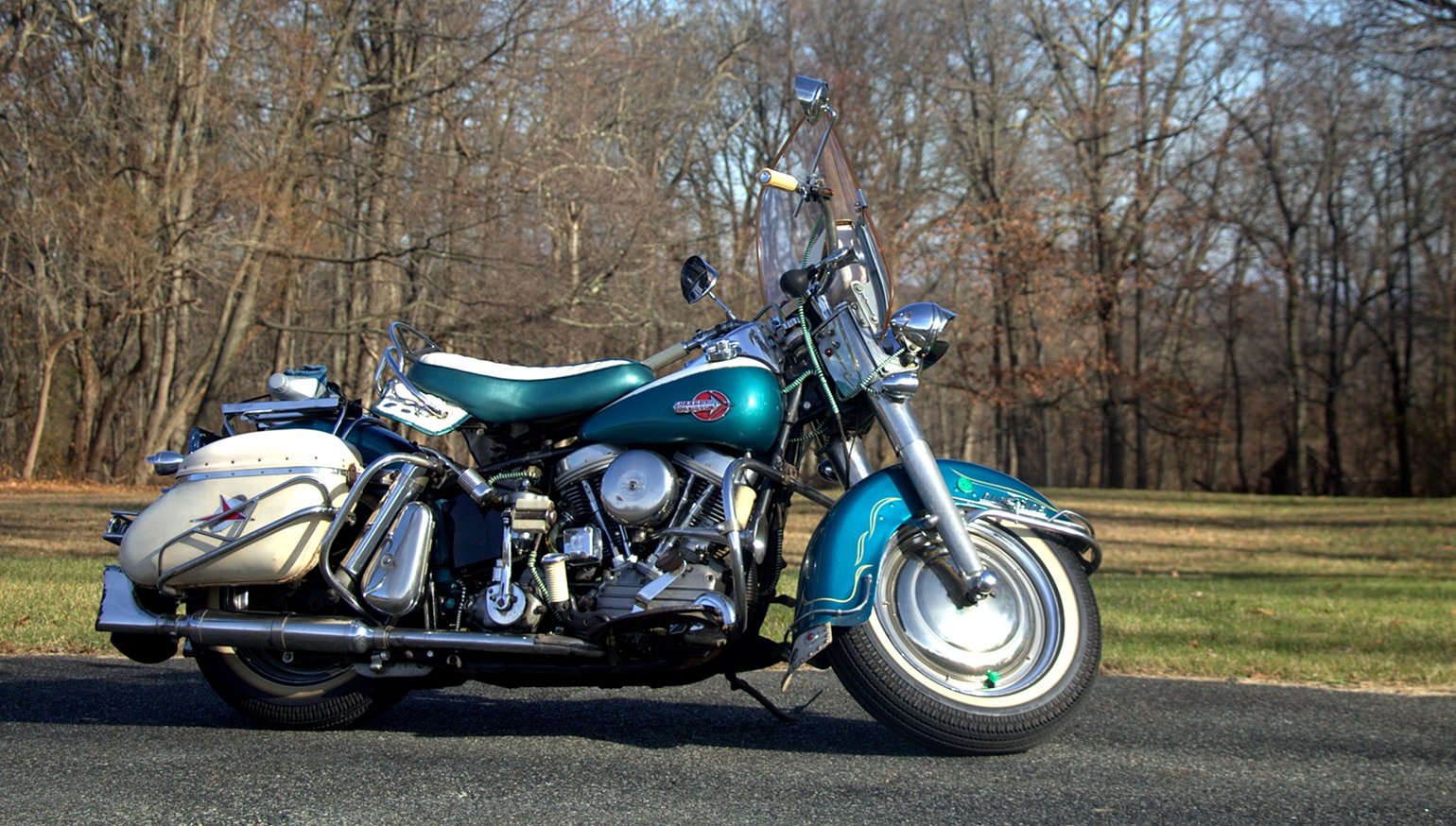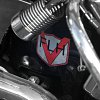They say you should never meet your heroes.
Today's retrospective review victim is a 1959 Harley-Davidson FLH, better known as the Duo-Glide. The Duo-Glide was a landmark motorcycle for the MoCo and, to be perfectly honest, unless you love these things, it's not really gonna knock your socks off. If you’re not a history nerd or a fan of dorky old-guy bikes, I can save you some time: It's old and riding it stinks compared to most modern bikes.
If you're still with me, however, I'd like to let you know why this crummy bike is very good.
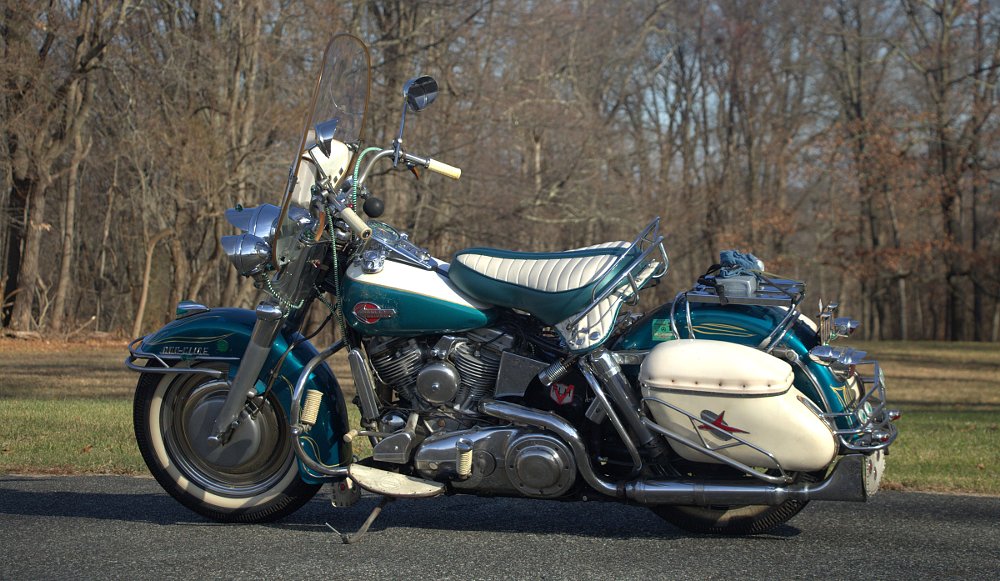
Some history of the Harley-Davidson Big Twin
1941's FL (the Knucklehead) is widely regarded as "the recipe," even for a modern Big Twin: big pushrod, single-cam-down-below V-twin engine with knife-and-fork con-rods, frame with relaxed geometry, and fat wheels and tires often shod with bias-ply tires to carry the load. Now, of course, there are differences — today we ain't usin' drum brakes and push-throttle cables that open up giant 10-pound brass Linkert soup-can-size carburetors, and there's no more oil vented to atmosphere puking on the ground. But the ethos of the thing is still the same.
The U series, the flathead forerunner to the E series, signed off in 1948, and the E series, a very similar (but lower displacement) OHV arrangement, went away in 1952. The FL and FLH (H indicating a few upgrades we'll get to in a bit) soldiered on, turning from the Knucklehead (back then known just as "the OHV") to this engine, the Panhead, so named due to the shape of its rocker boxes. In fact, the FLH exists even today. The motorcycle you see here is a step on that path between Knuck and Milwaukee-Eight, the current FLH powerplant.
It's also one I would posit is actually significantly closer to the Harley-Davidson on your dealer's sales floor than than a Knucklehead. Specifically, that's because in 1952, Harley-Davidson made footshift an option. In 1958, the Hydra-Glide turned into the Duo-Glide. Some history: Harley used to just use letters for their model names, like John Deere or the nice folks over at Farmall. When they developed a Big Twin using a modern (well, it was modern) hydraulic front end, they broke with their tradition and also gave it a model name: the Hydra-Glide. And if you're a good detective, you’ve probably guessed by now that the ‘58 Duo-Glide also received some boingers at the back of the bike, too — no more rigid frames. Out back, the mechanical drum was swapped for a hydraulic unit.
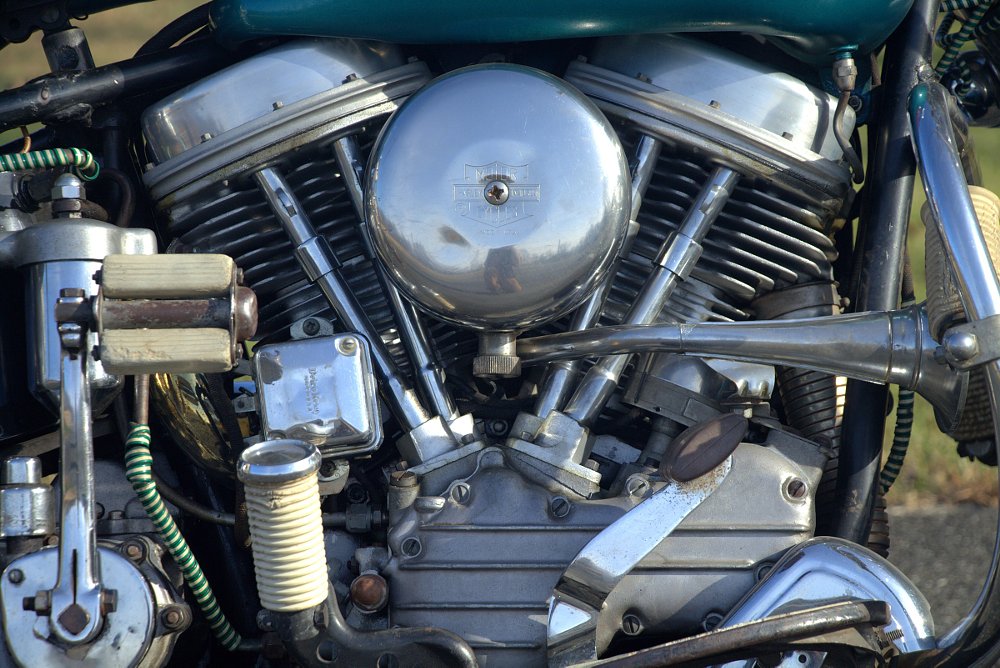
So my theory is as follows: If you were new to old Harleys and took one out for a ride, this is the oldest one that would feel "normal." It would feel old and quirky but still be plenty rideable. So let's put my theory to the test, eh?
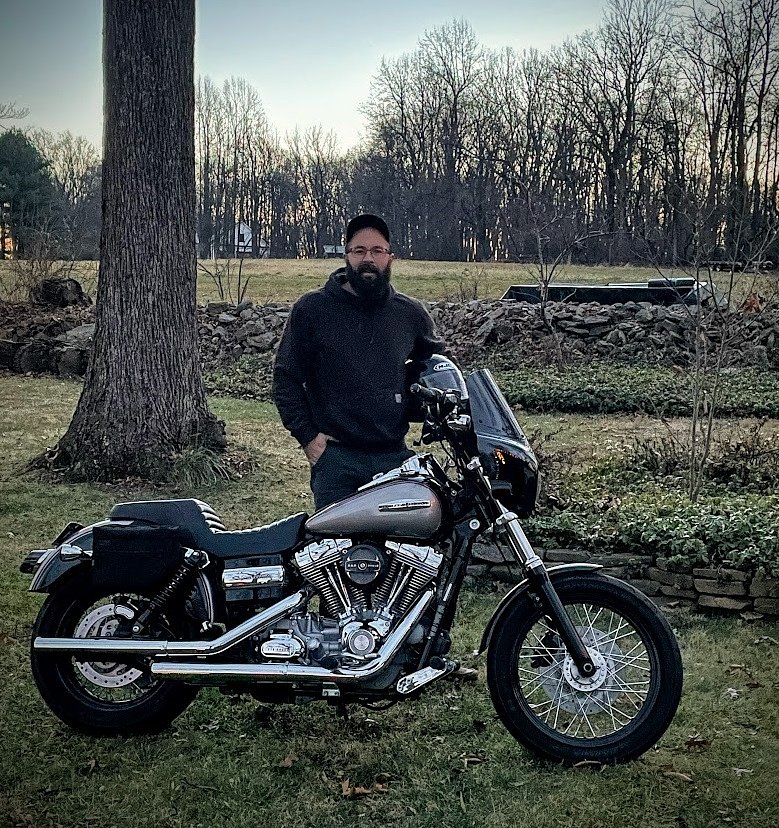
Meet Nate, test pilot for my theory
This is Nate. Nate's my neighbor. A little younger than me, he's a stereotypical H-D customer. Beard. Fix anything and everything. Has a truck and is willing to use it to help anyone do anything. Nate rides around on a 2009 Dyna, and he used to have a 600 cc race replica when he was younger. He's always been a little reticent to hop on any of my tankshift machinery. I know he knows I wouldn't care if he banged something up, but I think the potential guilt doesn't outweigh the potential fun.
So I fired up this Duo-Glide, took it for a nice long ride and got it good and hot, and pulled into his driveway and asked him if he'd like to take a ride. I showed him how to advance the spark, which is not as scary as it sounds. The left grip on a Duo acts like the right one; it rolls. You roll it forward ("closed") to retard the spark for starting, then roll it back ("WOT") to advance it. Most riders just leave it fully advanced once the bike is running, and I am no exception. So that's how I taught Nate to do it, too.
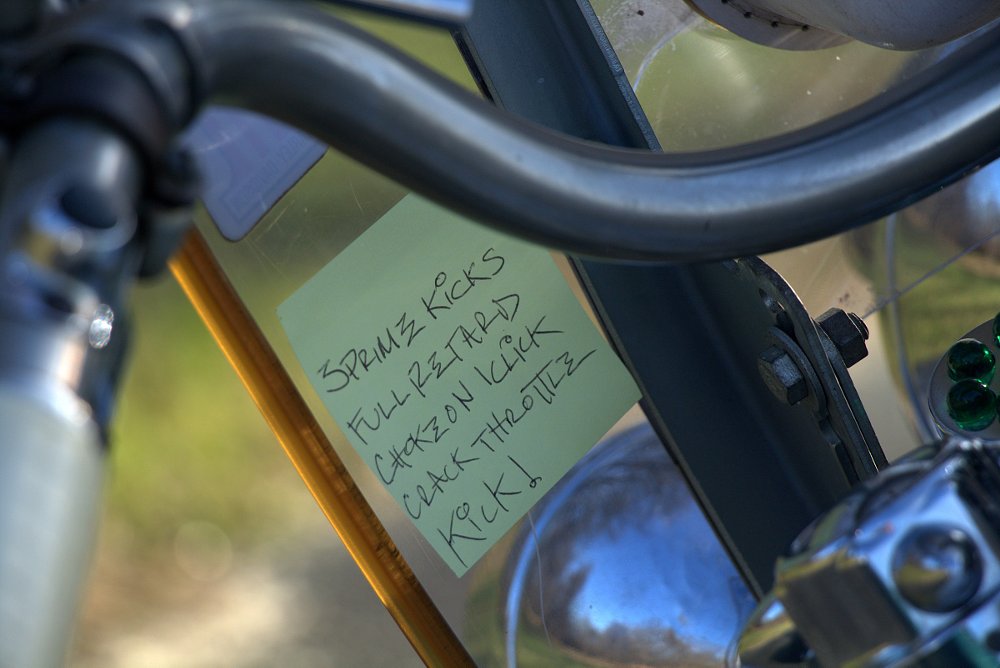
I didn’t start the bike for him. I feel that's important to testing my theory — if the damn thing won't even get running, it's not really much like a modern experience, is it? I did cork the bat a little for the test by giving him a hot bike, though. These old clunkers all have minds of their own. If this particular one does not get just the right combo of choke and prime kicks, it is utterly uncooperative.
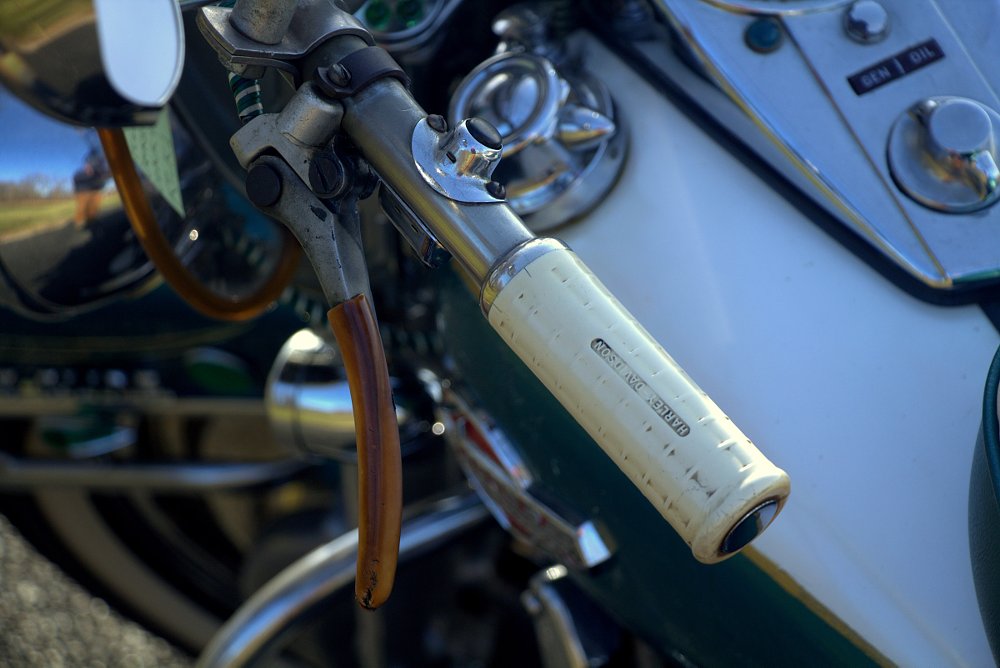
Nate fired it up within a kick or two, turned his hat around, and off he went. He came back all smiles, so I believe my theory holds up.
Riding the Pan
When I said you shouldn't meet your heroes, it's because… well, look at this-here motor scooter. It's beautiful! A previous owner bought every dang geegaw he could find and put some stuff on there for covering miles — genuine H-D bags, a rack, some passing lamps, and a big 'shield. But to ride it… meh. It's boring.
In 2023, swinging a leg over a Pan is like riding a really underpowered full-size bike with subpar brakes and poor handling. A 60-horsepower motorcycle with shitty vintage-appearing tires that makes more noise from the valvetrain than from the exhaust isn't gonna make anyone's socks go up and down if they've ridden a modern machine. The minor case of headshake at speed that's almost certainly from the shitty vintage-appearing tires ain't helping this Pan make its case. To ride it and compare it to a modern dresser is to be vastly underwhelmed.
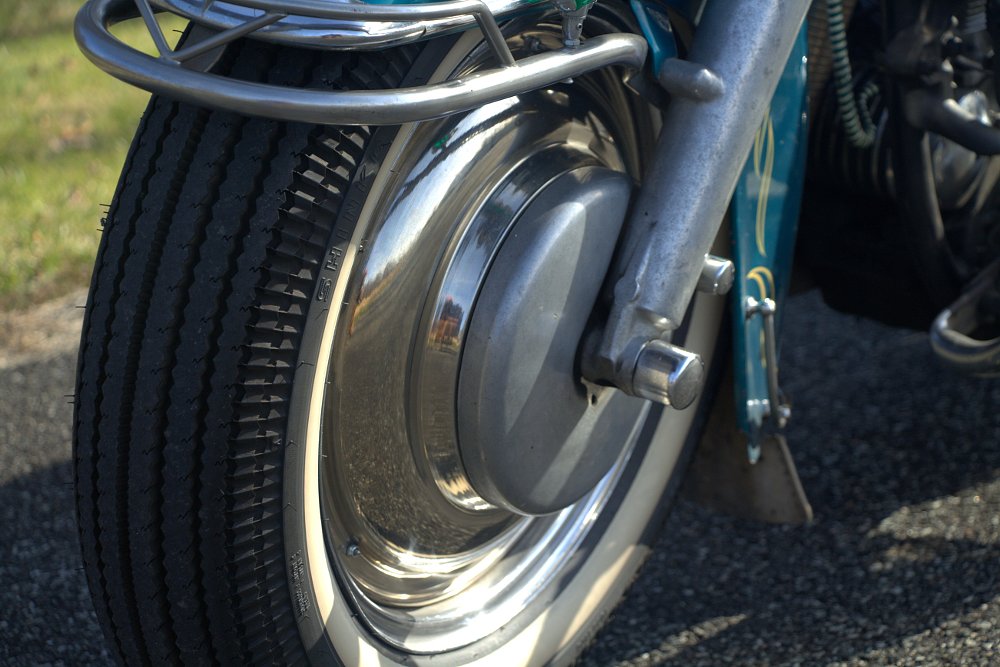
And for many of you, the review stops there, as it should. It's old. It doesn't leak too much. You knew that when you clicked, and you are correct.
And now, riding the Pan with a little context
I know, I sound like such a buzzkill. It looks like it should be thrilling, right? Those curves! The lines! Especially considering this machine is an FLH, which sported Harley's version of ported and polished cylinder heads. (Read: the worst of the casting flash was cleaned up and that's about it.) Those rolled out in 1955. In '56, the FLH had gotten a more aggressive cam, and in '57 the valve springs got stiffer, no doubt for those traversing the upper rev range of the Pan. 1958 brought the rear springy-dingers and juicy brakes mentioned earlier, allowing riders to take advantage of the massive amount of paving being done. In 1960, Harley gave the Pan dual points and condensers — a true single-fire system!
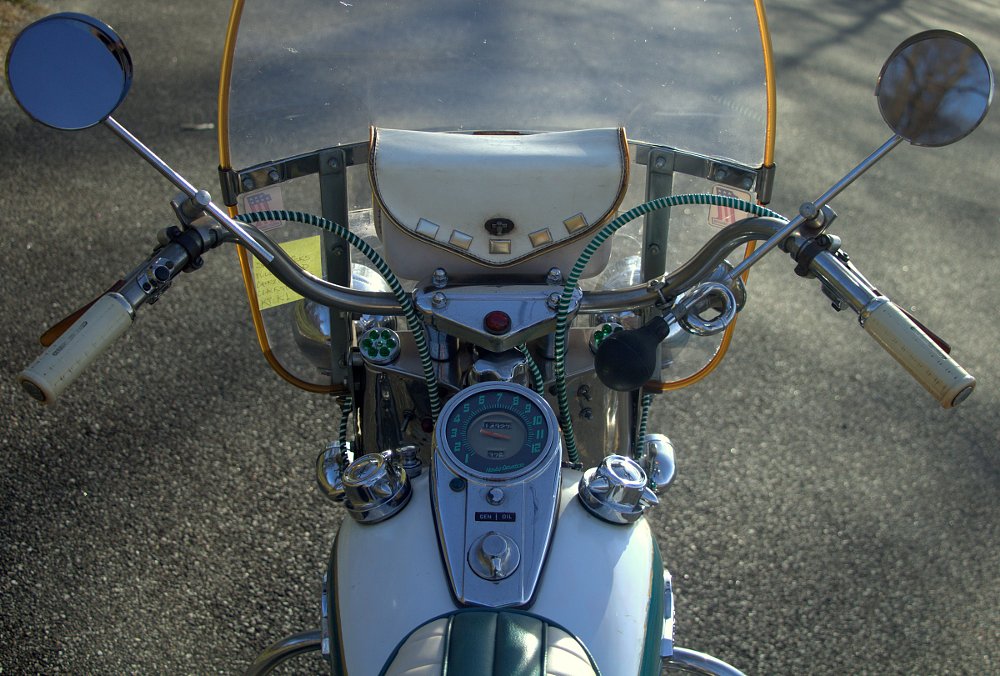
But in '59… well, H-D sorta rested on its laurels. There were no big changes. The tank badges are new for this year, and that's about it. But still, this was the finest motorcycle America's manufacturer had to offer. Indian had been slayed and buried, though the bikes could still be seen on the roads. The British had landed — the motorcycles, that is. The guys with the funny haircuts were a few years off yet. The bikes had devotees, but had made no really meaningful inroads in the American market, and the performance and sales ass-kicking Japan would deliver was still 10 years away. The Space Race was on in full swing, tail fins on cars were at their apogee, and for 26 cents a gallon, you could fill your Fat Bobs with 103-octane leaded fuel. And you could burn that fuel through this rip-snortin' motor scooter.
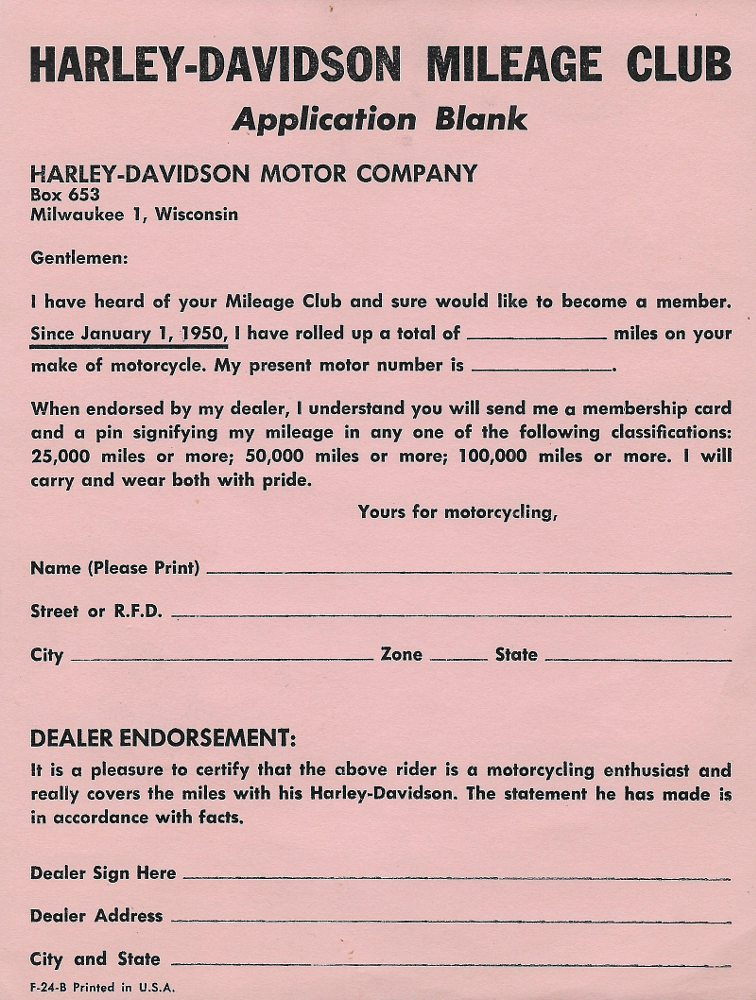
junk pile archives.
Nate's experience told me everything I thought I already knew. But perhaps you think that sample size is too small and I'm suffering from confirmation bias; I did when I was penning this piece. So how's this: Harley-Davidson started its Mileage Club in 1951 for riders having logged 25,000, 50,000, or 100,000 miles. Those are big numbers even for today — and Harley realized riders would do it shortly after the Pan was around for a couple years.
The Panhead can boogie along the freeway at modern(ish) speeds and can be used much like one of today's motorcycles, if ridden with a modicum of care and given a little more maintenance and attention than a current-model-year motorcycle.
That's a landmark in my book.




